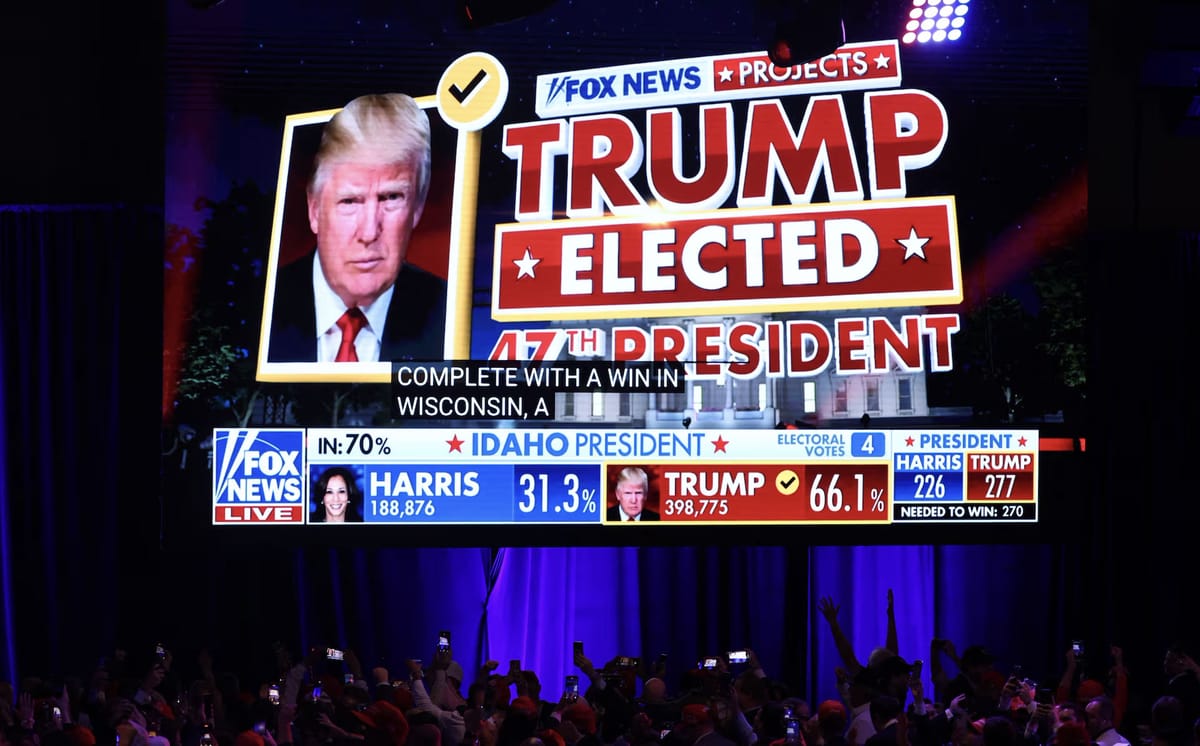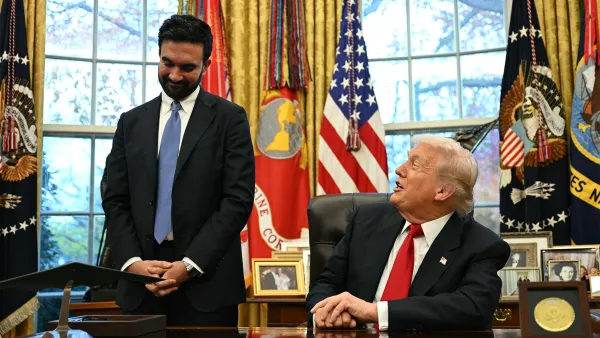Trump Elected 47th President

On Tuesday, in a landslide election and historic comeback, Donald J. Trump was re-elected as the 47th U.S. President. He carried all battleground states (Pennsylvania, Wisconsin, Michigan, Georgia, North Carolina, Arizona and Nevada), and won the popular vote by nearly 4 million votes. He’ll be the first president since Grover Cleveland to win a second non-consecutive term.
In a speech Wednesday, Vice-President Harris conceded the election. “While I concede this election, I do not concede the fight that fueled this campaign," she said. “Sometimes the fight takes a while.”
The Senate also flipped solidly Republican, picking up seats in Pennsylvania, Montana, Ohio and West Virginia. Arizona is still being counted, which could net another Republican senate seat. The balance of power in the House of Representatives is still unclear, with a slight favor in the direction of the Republicans.
A Diverse Coalition
When Trump came to the Republican Party, it was predominately white, older, college-educated, and male. Running against the party of DEI (Diversity, Equity and Inclusion), ironically the Republican party has become much more diverse. According to Newsweek, “Trump will likely have won the largest share of the non-white vote of any Republican presidential candidate since at least Gerald Ford in 1976, if not Dwight D. Eisenhower in 1960.” Here’s how:
Latinos: Trump won 46 percent of the Hispanic vote and a stunning 55 percent of Hispanic men. This gain comes after already increasing Latino support in 2020 over 2016. Miami-Dade County, Florida, which is majority Hispanic, voted for the Republican candidate for the first time since 1988. In 2016, Hillary Clinton carried Starr County, Texas, 97 percent Latino, by 60 points. This week, Trump won it by 16 points.
African-American men: He won between 25 and 30 percent of the black male vote nationwide, doubling his share from 2020 in some states. And, again, this gain comes after he’d already increased support in 2020 over 2016 from black voters. Baldwin County, Georgia, which is 42 percent black, went red in 2024.
Jewish voters: Trump won the largest share of the Jewish vote since the 1980s. Most see this gain as a referendum on Trump’s foreign policy in the Middle East versus that of the Biden/Harris administration.
Young voters: Trump’s campaign podcast and social media outreach to young men worked. Trump won a greater share of the under-30 vote than any Republican presidential candidate since 2008.
Catholics: Catholic voters supported Trump over Harris by a nearly 20-point margin. In 2020, Catholics backed Biden, who would become America’s second Catholic president, by a five-point margin.
All in all, Trump was backed by a remarkable 1 in 3 voters of color. Ironically, the main places where Trump lost any support (1-2%) was with white voters, older voters and black women.
Top Issues
This year, more voters headed to the polls believing the country was on the wrong track (70%) than in 2020 (60%).
According to CNN's exit polling, here are the top issues voters cared about:
- The state of democracy (34%)
- The economy (32%)
- Abortion (14%)
- Immigration (11%)
- Foreign policy (4%)
Harris spent much effort on the issues of democracy and abortion, while Trump focused more on the economy, immigration, and foreign policy. Based on the split in party affiliation of those who were concerned about the state of democracy, it’s possible that concern about this issue may have pushed some Republicans to vote for Trump.
State abortion ballot initiatives also played in Trump’s favor. Since the Dobbs v Jackson decision sent abortion rights back to the states, a number of states put abortion initiatives on the ballot. This allowed voters in several states to separate their support for abortion rights from their presidential vote. The net result was that Arizona, Missouri, Montana, and Nevada successfully passed abortion rights ballot measures (along with three blue states) even as Trump won those states.
The Aftermath
From Democrats, the shellacking was followed by a mixture of soul-searching, recriminations and viral meltdown moments.
Comedian Jimmy Kimmel struggled to hold back tears. “It was a terrible night for everyone who voted against him, and guess what? It was a terrible night for everyone who voted for him, too; you just don’t realize it yet,” he said.
MSNBC anchor Joy Reid laid blame at the feet of white women: “Black voters came through for Kamala Harris; white women voters did not. This will be the second opportunity that white women in this country have had to change the way that they interact with the patriarchy,” she continued. “If people aren’t receptive to it, and if people vote more party line, or more on race than on gender, and on protecting their gender, there’s really not much more that you can do.”
Ex-Obama advisor David Axelrod opined, “There were appeals to racism in this campaign, and there is racial bias in this country, and there is sexism in this country, and anybody who thinks that that did not in any way impact on the outcome of this race is wrong.”
Others, such as CNN’s Van Jones, later took a different view: “People are now saying America is this racist, sexist, fascistic country because of this outcome....That’s not what happened. What happened is, you had some key parts of this coalition, especially black men, who were not handled properly.…When you don’t give people respect, they don’t stick around.”
Chris Kofinis, a Democratic strategist and former chief of staff to centrist Senator Joe Manchin (D., W.Va.) said,“The elites of this country alienated voters everywhere because they didn’t want to hear what working- and middle-class voters were screaming for four years—focus on us and our problems, not your agenda to destroy Trump.”



